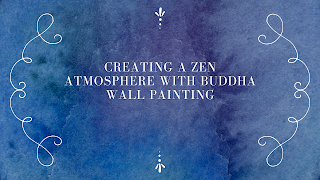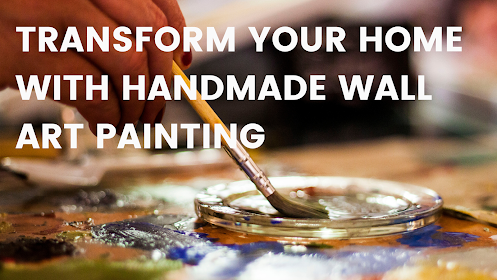Creating a Zen Atmosphere with Buddha Wall Painting
Step into a world of serenity and tranquility with Buddha wall paintings. These captivating masterpieces not only add beauty to your living space but also create a Zen atmosphere that promotes peace and harmony. Whether you're a spiritual seeker or simply looking to enhance the aesthetics of your home, incorporating a Buddha wall painting can be the perfect solution. In this blog post, we will delve into the fascinating history of Buddha wall paintings, explore different ways to hang them, and discover how these artistic gems can transform any room into an oasis of calmness. So let's embark on this enlightening journey together!
What is Buddha Wall Painting?
Buddha wall painting, also known as Buddha painting on the wall, is a form of art that depicts images or representations of Lord Buddha. These paintings typically showcase different aspects of Buddhism, such as teachings, symbols, and serene landscapes. With their intricate designs and vibrant colors, Buddha wall paintings serve as visual reminders of spiritual enlightenment and inner peace.
The subject matter of Buddha wall paintings varies widely. Some portray Siddhartha Gautama (the historical figure who later became known as Buddha) meditating under the Bodhi tree or achieving nirvana. Others depict important events from his life or feature symbolic elements like lotus flowers representing purity and rebirth.
Regardless of the specific imagery chosen for a Buddha wall painting, they all share a common purpose - to inspire contemplation and create an atmosphere conducive to meditation and reflection. By incorporating these beautiful pieces into your living space, you invite a sense of tranquility that can help soothe your mind and rejuvenate your spirit.
Whether placed in a meditation room, living area or bedroom – anywhere you seek solace – a well-placed Buddha wall painting can transform any space into an oasis of calmness while adding an element of beauty to your surroundings
The History of Buddha Wall Painting
The history of Buddha wall painting dates back to ancient times, when Buddhist art began to flourish in various parts of Asia. This form of artistic expression has its roots in the rich tradition and symbolism associated with Buddhism.
Buddha wall painting was first emerged in India during the Gupta period (4th to 6th century AD), where they adorned the walls of caves and monasteries. These early paintings depicted scenes from the life of Siddhartha Gautama, the historical figure who later became known as Buddha.
As Buddhism spread across other regions, such as China, Tibet, and Southeast Asia, so did the practice of creating Buddha wall paintings. Each culture infused their own unique artistic styles and interpretations into these artworks.
In China, for example, Buddhist murals were often found in temples and palaces. They showcased vibrant colors and intricate details that conveyed spiritual teachings. In Tibet, thangka paintings became popular forms of depicting Buddha's image on portable scrolls or hanging tapestries.
Throughout history, Buddha wall painting served not only as decorative art but also as a visual representation of Buddhist teachings. The images portrayed compassion, wisdom, enlightenment, and other principles central to Buddhism.
Today, this ancient tradition continues to inspire artists around the world who seek to capture the essence of Buddha's teachings through their brushstrokes. Whether you're a devout follower or simply appreciate the beauty and tranquility it brings to your space,
a Buddha wall painting can create a serene environment that promotes inner peace and mindfulness
How to Hang a Buddha Wall Painting
When it comes to hanging a Buddha wall painting, there are a few key considerations to keep in mind. First and foremost, you'll want to choose the perfect spot for your artwork. Find a wall that is free from clutter and has enough space to properly showcase the painting.Next, decide on the height at which you want to hang your Buddha wall painting. It's generally recommended to place it at eye level or slightly above eye level for optimal viewing. Use a measuring tape and mark the desired height on the wall before proceeding.
Before actually hanging the painting, make sure you have all the necessary tools and hardware. Depending on the weight of your artwork, you may need screws or picture hooks along with a hammer or drill.
Once you have everything prepared, carefully lift and position your Buddha wall painting against the marked spot on the wall. Ensure it is straight by using a spirit level or simply eyeballing it if you're confident in your ability.
Secure your artwork onto the wall using screws or picture hooks. Take care not to damage any wires or cables behind the wall while doing so.


Comments
Post a Comment